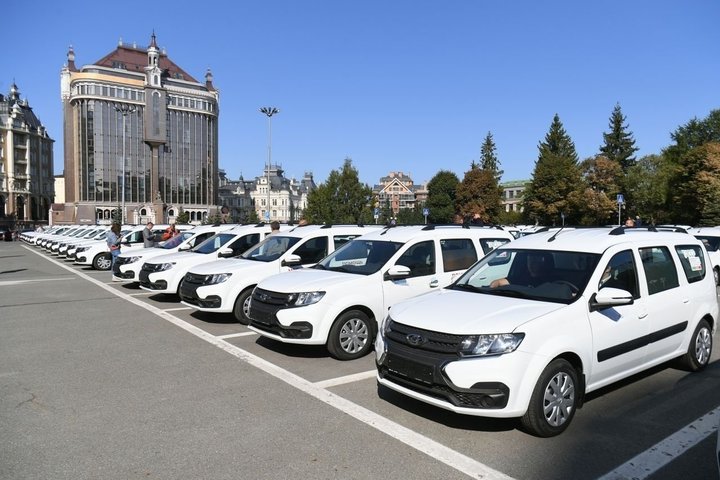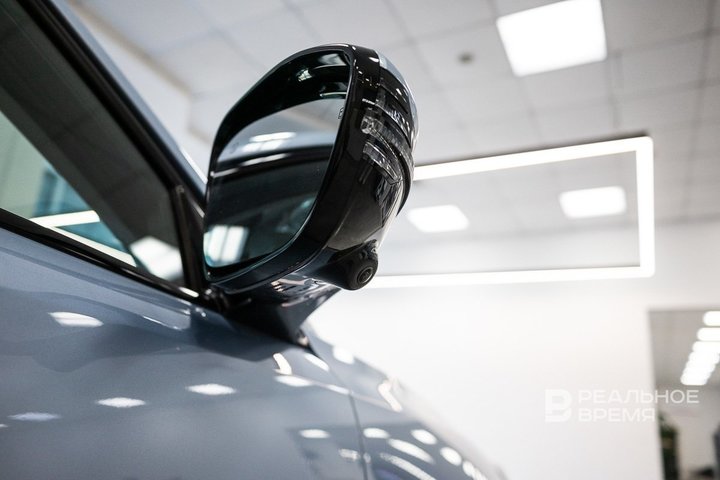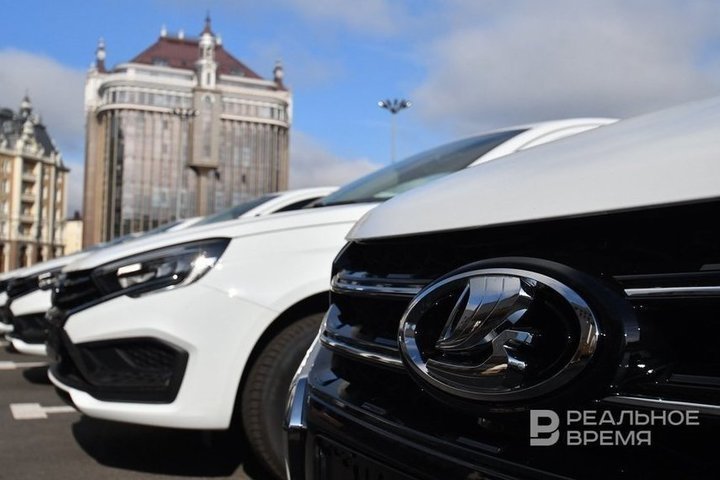Electric Largus as our answer to Zeekr, Tesla?
Sales of new cars in the country are growing faster than forecasts and even exceeded pre-COVID-19 figures

Production of an electric car in the Lada family — e-Largus — has started in Russia. Assembly of the model has begun at a plant in Izhevsk. The opening of the production took place in the presence of AvtoVAZ President Maxim Sokolov and head of Udmurtia Alexander Brechalov. Read about how Russian manufacturers decided to bet on car electrification in a report of Realnoe Vremya.
Localisation has reached 50%
As Sokolov reported, several dozen Lada e-Largus electric cars are planned to be released by the end of 2024. Further production volumes will depend on demand for the model, the development of charging infrastructure in the regions, as well as “focusing government incentive measures on supporting buyers of truly localised electric vehicles,” the press service reports.
“Of course, we must accumulate a certain amount, first of all here, in the finished goods warehouse, and then deliver it to all dealerships in our country, and today there are more than 320 centres in all regions. By the end of the year, we will release a hundred, two, maybe hundreds of such cars there,” Sokolov noted.
AvtoVAZ positions the e-Largus as the first Russian electric car with a battery that is more than 50% made up of Russian components. Despite the presence of imported elements, the Lada Izhevsk plant carries out a full assembly cycle, including welding and painting of the body. The Chinese-Russian Moskvich, for example, cannot boast of this.
The average cost of a new electric car is 7 million rubles, and the e-Largus will be sold for 3 million rubles
Lada e-Largus is equipped with a 163-horsepower electric motor (nominal power — 68 hp). The station wagon will be equipped with a two-section traction battery with a capacity of 61 kW h, and the van will receive a simplified version with a single-section battery of 46 kW/h.
The range on one charge will be up to 400 km. Both modifications accelerate to 100 km/h in 9.5 seconds. The maximum speed is limited to 145 km/h to increase the range.

The Lada e-Largus model project was presented in August 2022. Then Sokolov said that its price would be 20-30% higher than that of gasoline versions. The head of Udmurtia then expressed his readiness to purchase the first electric car. “I am ready to place the first application for this car,” Brechalov said.
“The cost of the Lada e-Largus is from 2,990,000 rubles (for the basic configuration of the van), taking into account the subsidy for buyers of electric cars, the president of AvtoVAZ told reporters today.
Auto experts note that the electric vehicle market in Russia is not yet saturated, so domestic manufacturers can occupy the free niche of budget cars, competing with Chinese brands that actively supply “electric cars” to Russia.
“Over the past two years, the electric vehicle segment has made a noticeable breakthrough, the volume of supply in the new car segment is more than 10 times. However, the niche of budget cars of this type remains virtually free. The average cost of a new electric car in 2024 remains above 7 million rubles,” expert at Avto.ru Ivan Ananyev, told Realnoe Vremya.
Why not Granta, Vesta or X-Ray?
Initially, the start of e-Largus production was planned for the end of 2023, but later it was moved to 2024 due to the transfer of the conveyor line. Instead of Tolyatti — to Izhevsk. AvtoVAZ explained the shift in deadlines by the desire to “maximum load all three conveyor lines in Tolyatti in the coming years” due to the increase in production volumes of existing models and new cars: Iskra, Aura, as well as a new crossover on the Vesta platform.
Nevertheless, many car enthusiasts on forums are interested in why Lada chose the Largus model for electrification, and not more popular options. For example, by the end of 2023, AvtoVAZ sold its most popular Granta model in the amount of 206,100 units. For comparison: Largus was sold in only 863 units, which is 238 times less. It also lost in sales to such cars as Niva (92,000 units) and Vesta (49,300).

Auto experts point to the success of this car in the segment of cargo-passenger models.
“During the first production cycle, from 2012 to 2022, Lada Largus was one of the most popular cargo-passenger models on the domestic market. Its design and layout are well suited for adaptation to the installation of an electric motor and battery pack,” Ananyev explained.
Nevertheless, it seems that it will be difficult for the station wagon to occupy its niche in the market. Electric cars are not yet widely used in taxis, including due to the limited power reserve in winter. In addition, Largus will be too expensive for private buyers — it is much more profitable to purchase a gasoline version and install LPG to reduce operating costs.
